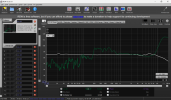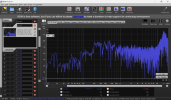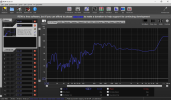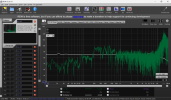Correct i uploaded the ones taken when subwoofer was not on which i realised after uploading the screenshots. I will try upload the correct ones later.
Excellent, thank you.
What about the peaking treble? It cant be normal? I already have the steeper option in audyssey for treble cut together with the cinema eq in the settings for more treble taming But the result is this.
I very strongly suspect the peaking treble is a measurement artifact and as such I would strongly advise to not try EQing it. You can confirm if it is a measurement artifact by briefly having REW play a 1kHz tone at a comfortable level followed by a 12kHz tone at the same level. A few seconds at what sounds to be about speech level is safe, but if you do it too loud for too long you could destroy your tweeters... just so you are aware.
When you are analyzing a measurement, it is important to understand when your ears should overrule your eyes. If you have a set of headphones and an equalizer, see what a 30dB peak above 10kHz sounds like and then ask yourself if your ears should be overruling your eyes when you look at the measurements you made. Additionally, in room measurements above 1kHz have limited value, and when made with an inexpensive uncalibrated microphone, even less so. Below 1kHz, even an inexpensive uncalibrated microphone is useful because it can help you identify room modes and other low frequency problems, as was mentioned.
Let me ask you
@gelv ,what are you hoping to achieve? I ask because you mentioned in your opening post:
Basically If it is then i can make use with the audyssey mic while saving money by not buying umik while also avoiding having another hardware piece at home lol
More accuracy will require more money and more hardware at home, but far more importantly than that, it will require the time and effort to understand how to use it properly and what the data is telling you.
I dont do much measurements
Doing a lot of measurements is
not a requirement to be an audiophile. Maybe it's better to see how much you enjoy making measurements with what you have before deciding to invest in specialized equipment.
But recently ive noticing that my sound system is not as good sounding as it was years ago which made me quickly measure the frequency response with an android app where i discovered that i have a huge null from 100hz to 300hz.
And the Audyssey mic that you have can help assess that. One reason being that it can very accurately reveal changes even though if it is not capable of absolutes.





